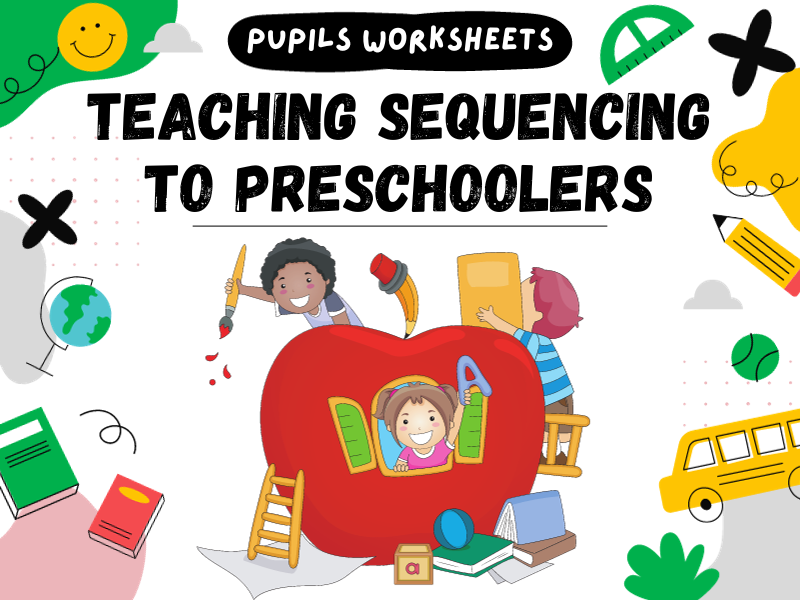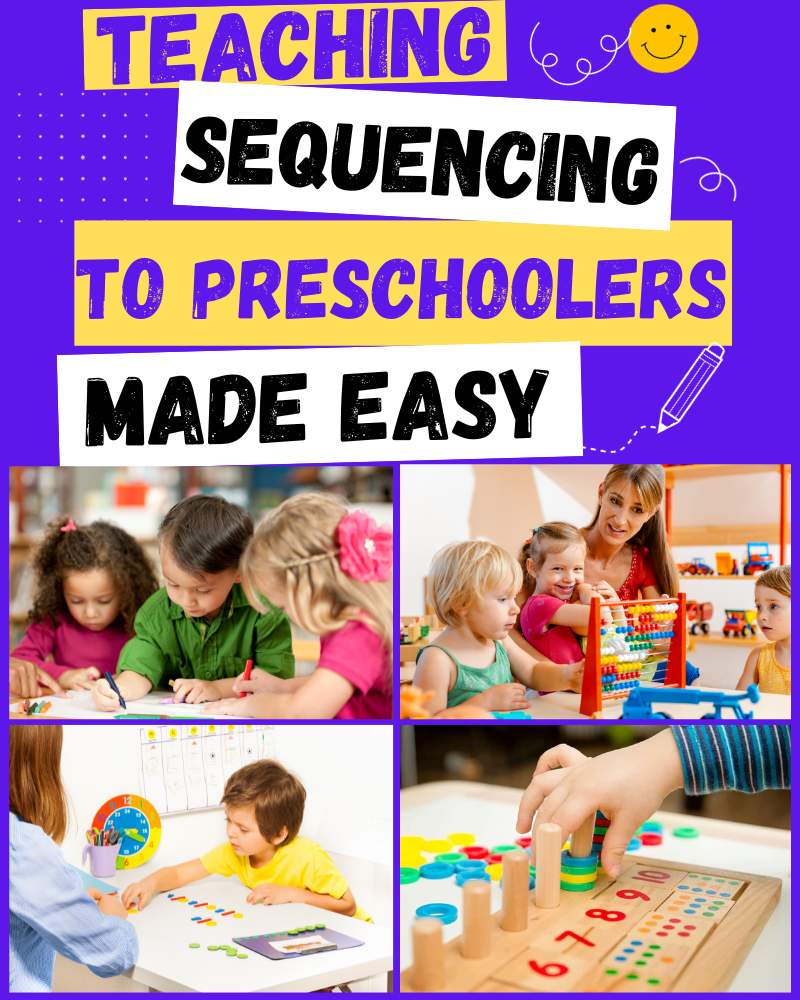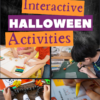Table of Contents
Introduction

Teaching sequencing to preschoolers may seem like a challenging task, but it’s a fundamental skill that lays the foundation for their cognitive development. In this article, we’ll explore the importance of teaching sequencing, its benefits, and various strategies to make it easy and fun for both children and educators.
Why Sequencing is Important for Preschoolers
Understanding the order of events and organizing them coherently is a crucial skill. It helps preschoolers comprehend stories, solve problems, and develop their ability to think logically. Sequencing also plays a significant role in improving memory and communication skills.
The Benefits of Teaching Sequencing
Teaching sequencing offers a plethora of benefits, such as enhancing cognitive development, language skills, and problem-solving abilities. It also fosters creativity and independence in preschoolers.
Strategies for Teaching Sequencing
Understanding the Basics
Begin with the basics. Explain to preschoolers what sequencing means and its importance. You can use simple examples like morning routines or planting a seed to introduce the concept.
Storytelling with Sequences
Engage children in storytelling, where they narrate a sequence of events. This helps them practice sequencing and boosts their imagination.
Visual Aids and Manipulatives
Utilize visual aids and manipulatives, such as pictures, flashcards, and interactive games, to make learning sequences more tangible and enjoyable.
Incorporating Sequencing in Everyday Activities
Sequencing can be integrated into daily routines. Have children organize their toys, sort objects by size or color, or set the table for lunch. These activities make sequencing a part of their everyday life.
Fun and Educational Sequencing Games
Turn learning into a game. Play games like “Simon says” or puzzles that require arranging pieces in the correct order.
The Role of Technology in Teaching Sequencing
Use educational apps and interactive websites designed for preschoolers. These can make learning sequences engaging and interactive.
Nurturing Critical Thinking Skills
Encourage children to ask questions and think critically. This helps them not only understand sequences but also improve their problem-solving abilities.
Patience and Encouragement
Be patient with preschoolers as they grasp the concept of sequencing. Encourage their efforts, and praise their achievements to boost their confidence.
The Importance of Practice
Repetition is key to mastering sequencing. Regular practice ensures that preschoolers retain this vital skill.
The Sequencing Toolkit
Create a toolkit with sequencing materials, including books, puzzles, and educational toys. Having these resources readily available can make learning more convenient.
Building Independence
Allow preschoolers to make choices and decisions based on their understanding of sequencing. This fosters independence and confidence.
Parental Involvement
Encourage parents to reinforce sequencing skills at home. Provide them with tips and activities to support their child’s learning journey.
Common Challenges and How to Overcome Them
Address challenges such as short attention spans or frustration when things don’t go as planned. Offer solutions and alternatives to keep the learning process positive.
Be sure to check out our list of Sequencing activities too!
Conclusion
Unlocking the magic of teaching sequencing to preschoolers can significantly impact their development. By using engaging strategies and maintaining patience and encouragement, educators and parents can make this crucial skill fun and accessible.
Frequently Asked Questions
1. When should I start teaching sequencing to my preschooler?
Start introducing sequencing concepts around the age of 3, but adapt to your child’s pace and readiness.
2. What are some simple activities to teach sequencing?
Daily routines like getting dressed, brushing teeth, or setting the table can be used to teach sequencing.
3. How can I make sequencing fun for my child?
Incorporate games, storytelling, and visual aids to make sequencing an enjoyable learning experience.
4. Are there any recommended books for teaching sequencing?
“The Very Hungry Caterpillar” by Eric Carle and “Brown Bear, Brown Bear, What Do You See?” by Bill Martin Jr. are excellent choices.
5. How can I help my child overcome frustration when learning sequencing?
Offer positive reinforcement, break tasks into smaller steps, and provide plenty of support and encouragement during the learning process.
Unlock the magic of teaching sequencing to preschoolers. By following these strategies and fostering a positive learning environment, you can empower young minds with a valuable skill that will serve them well throughout their lives.



